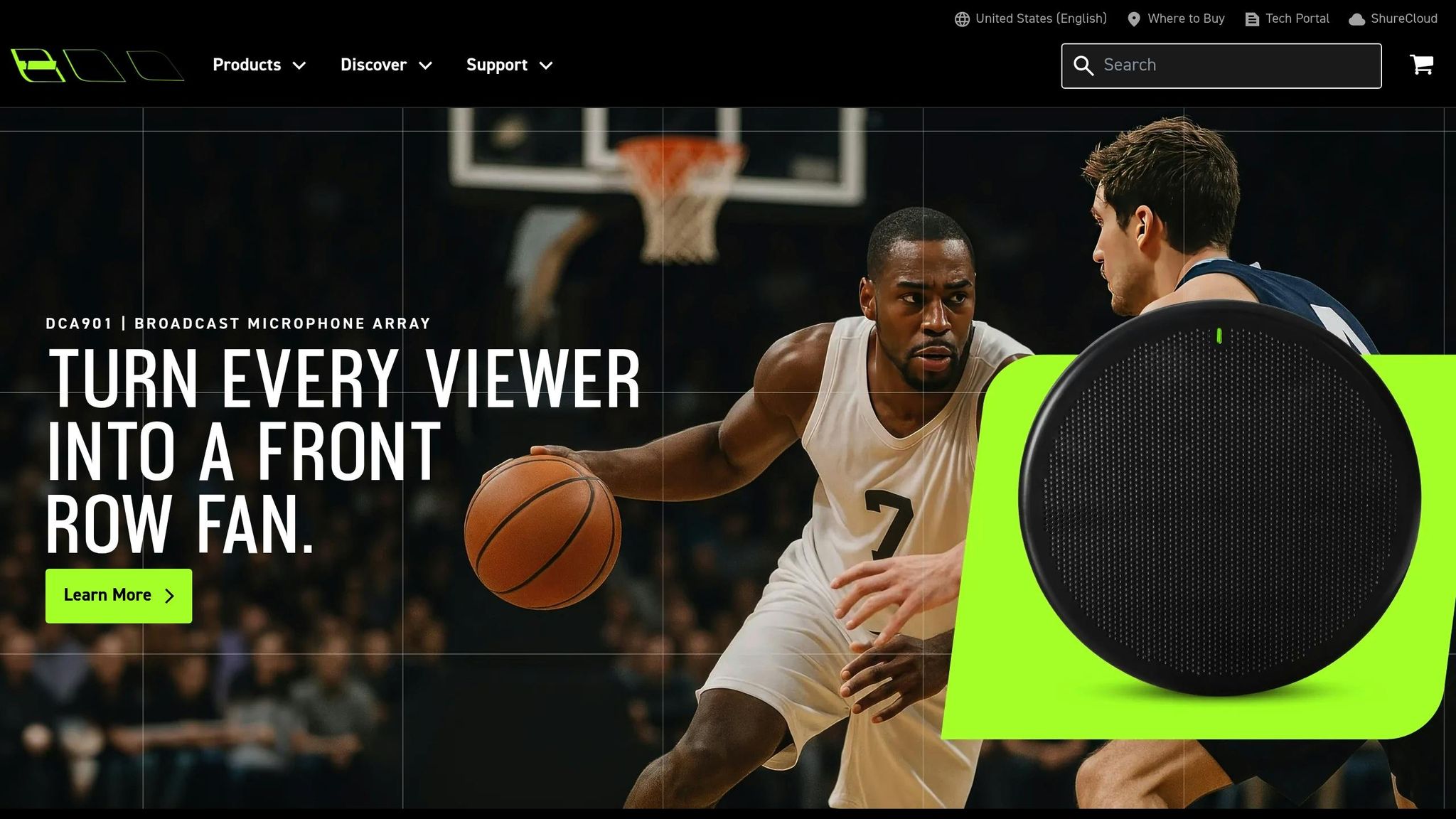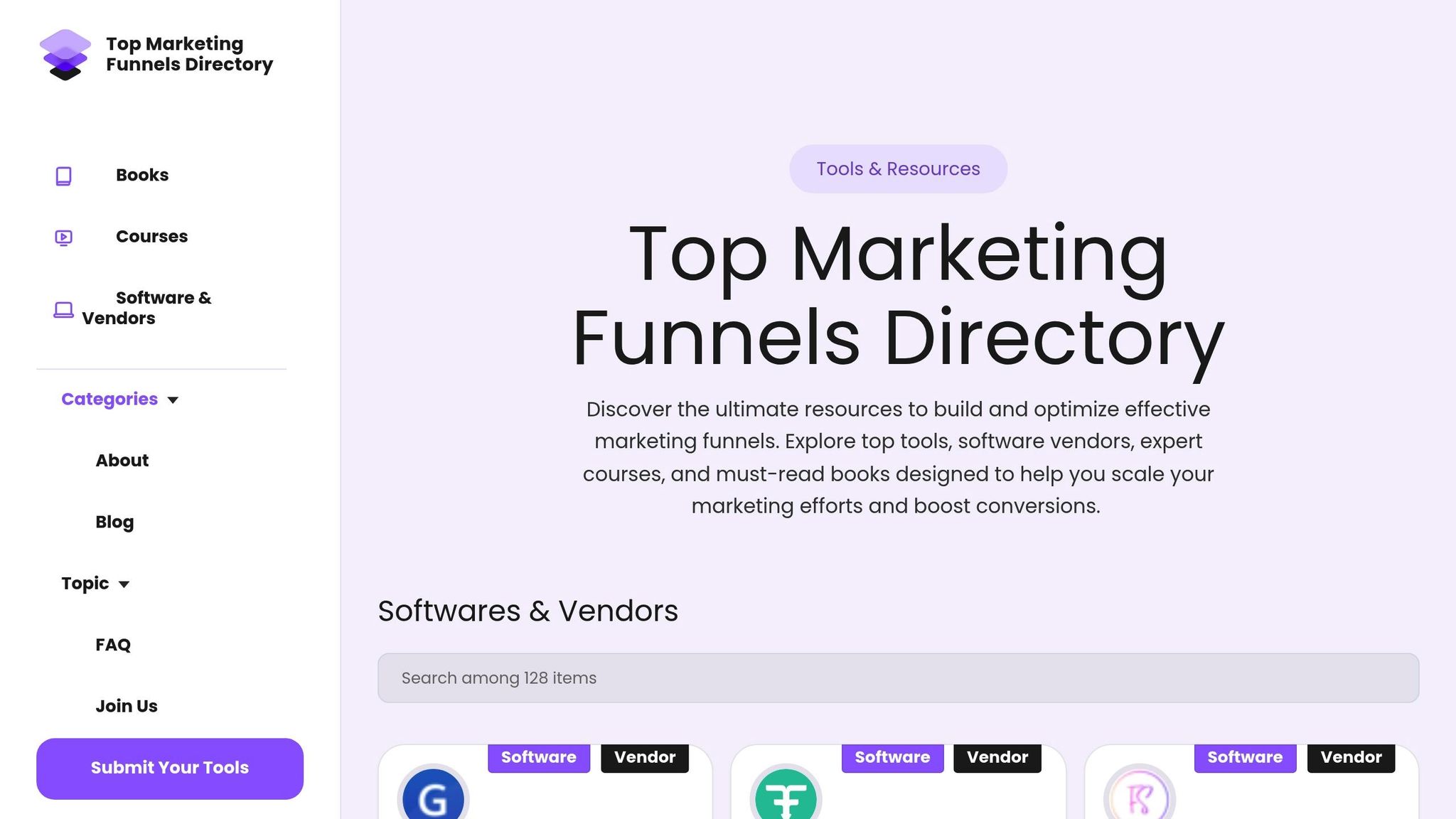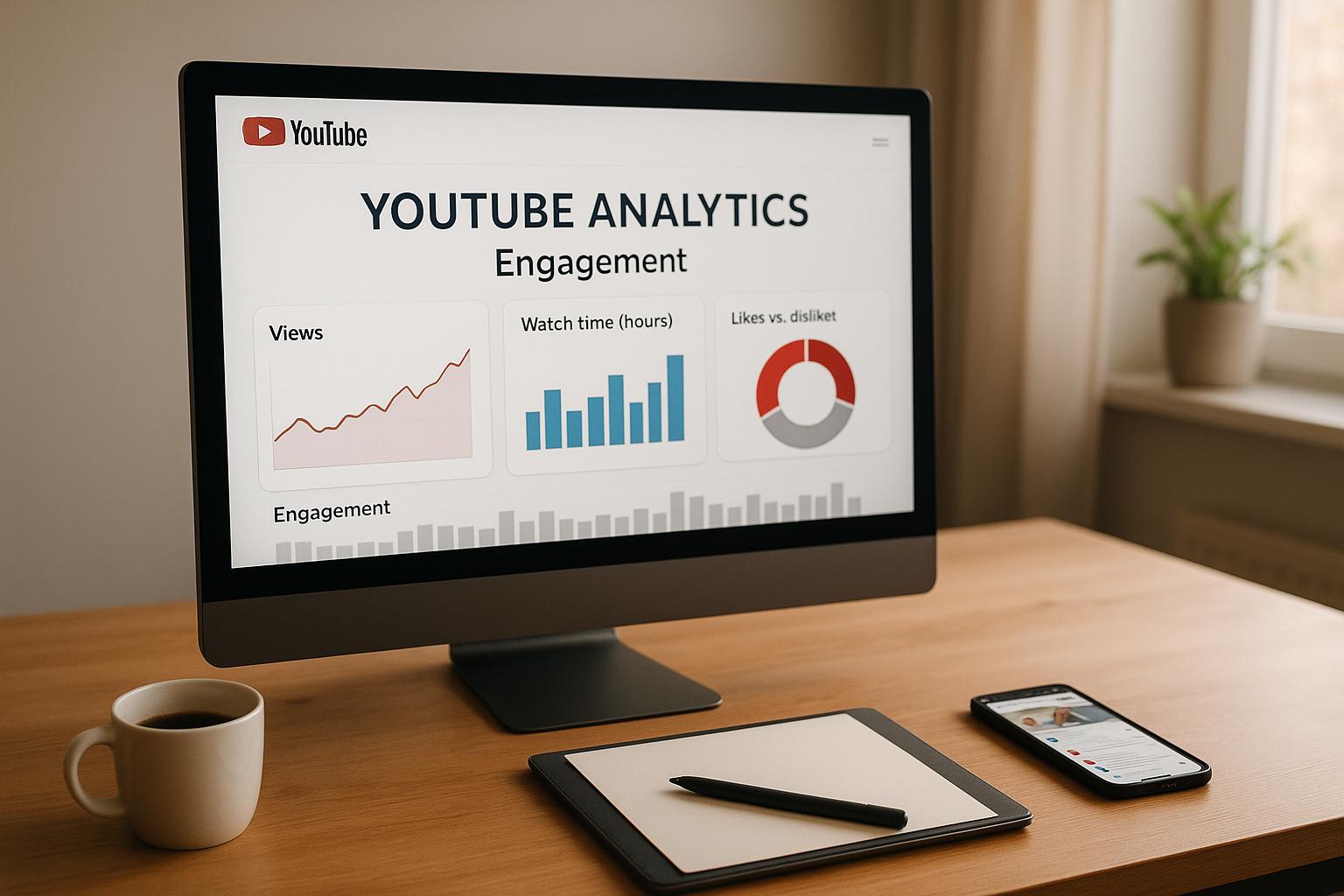Poor audio can ruin your webinar - even if your content is great. Research shows that bad sound leads to lower engagement, higher drop-off rates, and fewer conversions. On the other hand, clear, professional audio helps keep attendees focused, boosts interaction, and builds trust. Here’s why audio quality matters and how you can improve it:
- First Impressions Count: Static or muffled sound makes you seem unprepared and unprofessional.
- Engagement Drops with Bad Audio: Poor sound disrupts focus, reduces participation, and increases frustration.
- Conversions Depend on Clarity: Clear audio ensures your message is understood, increasing the chance attendees act on your call-to-action.
- Retention Suffers: Bad audio reduces information retention by up to 30%, making it harder for your audience to remember key points.
Quick Tips to Fix Webinar Audio Issues
- Use a Quality Microphone: USB mics like the Audio-Technica AT2020USB+ or Blue Yeti deliver clear sound.
- Optimize Your Room: Add rugs, curtains, or acoustic panels to reduce echoes.
- Test Before You Go Live: Do a full audio check, including headphones and platform settings.
- Monitor Audio During the Webinar: Use headphones to catch and fix issues in real-time.
Investing in better audio equipment and preparation can transform your webinars into engaging, effective events that drive results.
Webinar: How to Improve Your Webinar Audio | Shure

Research Data: Audio Quality and Webinar Engagement
Research shows that audio issues can undermine speaker credibility and reduce information retention, directly affecting the success of webinars. For businesses that rely on webinars as a marketing tool, these findings highlight the importance of prioritizing audio quality.
Studies Connecting Audio Quality to Engagement
A study published in Science Communication, conducted by the University of Southern California (USC) and Australian National University (ANU), revealed how seamless audio enhances the credibility and effectiveness of presentations. In their first experiment, participants watched two YouTube conference talks - one with clear audio and the other with poor sound quality. The results were striking: when the audio quality was poor, participants rated the speaker as less intelligent, the research as less important, and the overall presentation as inferior.
In a second experiment, identical radio interviews from NPR's Science Friday were presented in both high and low audio quality. The findings were consistent - low-quality audio led to negative impressions of the research and the speaker. ANU Professor Eryn Newman, a co-author of the study, explained:
"As soon as we reduced audio quality, the scientists and their research lost all credibility."
Another joint study by USC and Yale found similar results. Participants exposed to low-fidelity audio rated speakers as less intelligent, less likable, and less trustworthy - even when the content was the same. Together, these studies confirm that audio quality has a profound effect on how audiences perceive and engage with presentations.
How Poor Audio Affects Audience Behavior
The consequences of poor audio go beyond annoyance. Audio issues can reduce speaker credibility by around 19%, which often leads to attendees leaving webinars early.
Poor sound quality forces listeners to work harder to process the information, creating what experts call "cognitive friction." According to Podcast Provisions, this additional mental strain can consume up to 40% of a listener’s mental resources, leaving less capacity for engagement and retention. When attendees have to strain to understand the speaker, frustration builds, and they are more likely to disengage entirely.
Technical audio problems, such as muffled or choppy sound, not only hinder comprehension but also harm the presenter’s or brand’s perceived professionalism. WebinarNinja highlights this risk:
"All you need to do is commit a few webinar mistakes, such as starting late or having poor audio, and POOF!💨 Your audience is gone for good."
Interestingly, poor audio quality has been shown to drive away audiences faster than uninteresting content. Beyond audience behavior, audio clarity plays a crucial role in improving learning outcomes and fostering trust.
How Audio Clarity Affects Learning and Trust
Good audio isn’t just about keeping people tuned in - it’s also key to ensuring they retain information and trust the presenter. Research indicates that poor audio quality can reduce information retention by up to 30%. This loss is particularly damaging for webinars focused on education or lead generation.
Clear audio also plays a significant role in building trust. Studies show that audiences are more likely to trust a speaker when the audio is clear and professional. High-quality audio signals competence and reliability, helping to establish a stronger connection with the audience.
On the flip side, enhancing audio with immersive sound effects or balanced background music can increase emotional engagement by 16% or more. Data from the Audacy x Lumen Research Study further supports this, showing that audio campaigns outperform other channels in attention (+56%), recall (+8%), and brand choice (+67%). These findings make it clear: investing in high-quality audio isn’t just about avoiding problems - it’s a way to elevate webinar performance across the board.
Key Metrics Affected by Audio Quality in Webinars
Research consistently highlights how audio quality shapes webinar performance. From engagement to conversion rates, the sound quality of your webinar can make or break its success. These metrics illustrate just how much clear audio matters at every stage of the attendee experience.
Attendance Duration and Retention Rates
Good audio is essential for keeping attendees tuned in. According to TechSmith's Video Viewer Studies, conducted over the past decade, poor sound is the top reason viewers stop watching videos. The same holds true for webinars, where live technical issues can't be fixed once the session begins.
Clear, professional audio significantly boosts retention. In fact, viewers are five times more likely to finish videos with high-quality sound. For webinars, this translates into higher completion rates and more engaged audiences.
Nami Assir, an expert in helping executives use LinkedIn video to build authority, emphasizes the impact of audio issues:
"When they do, bad audio makes them click away instantly".
Interestingly, audiences are more tolerant of blurry visuals or minor glitches than they are of muffled or choppy sound. This makes audio quality a key factor in whether attendees stay engaged or exit early.
Interaction Metrics: Polls, Q&A, and Participation
Once retention drops, audience interaction tends to follow. Poor audio creates a ripple effect that undermines engagement. When attendees struggle to understand what’s being said, their focus shifts from participating to simply trying to keep up. This frustration often results in lower participation in polls, Q&A sessions, and chat discussions.
Technical audio problems - like buffering, echoes, or disconnections - only add to the frustration. These issues can make attendees lose interest entirely, leading to lower participation rates and even early exits from the session.
Conversion and Lead Generation Rates
The impact of audio quality extends beyond engagement - it directly affects your bottom line. Clear audio establishes credibility, builds trust, and encourages attendees to act on calls-to-action, whether it’s downloading resources or sharing contact details.
On the flip side, bad audio can dilute your message. If attendees struggle to hear your key points, they’re less likely to remember them, reducing the effectiveness of follow-up marketing efforts and word-of-mouth referrals. When your audience clearly understands your product, value proposition, and next steps, they’re more likely to take action, driving better conversion rates and improving your marketing funnel’s overall performance. This makes investing in high-quality audio a smart move for any webinar strategy.
sbb-itb-a84ebc4
Practical Methods to Improve Webinar Audio
Now that we’ve covered how audio quality impacts engagement and conversion rates, let’s get into actionable strategies to ensure your webinars sound polished and professional. These tips will help you sidestep technical hiccups and create a seamless audio experience that keeps your audience tuned in.
Equipment: Microphones and Noise Reduction Tools
Ditch your computer’s built-in microphone - it just won’t cut it for professional webinars. Instead, invest in a quality USB condenser microphone like the Audio-Technica AT2020USB+ or Blue Yeti. These deliver broadcast-level clarity, ensuring your voice comes through crisp and clear. If you’re on the move during your presentation, lavalier microphones are a great choice for consistent sound levels.
To tackle background noise, real-time noise reduction software is a game-changer. Tools like Krisp, RTX Voice, or even the noise suppression features built into platforms like Zoom can filter out distractions without requiring additional hardware.
For those using high-end XLR microphones, you’ll need an audio interface to convert analog signals to digital. Devices like the Focusrite Scarlett Solo or PreSonus AudioBox USB 96 not only handle this conversion but also offer superior preamps compared to standard USB mics.
Room Setup and Soundproofing
Your environment plays a huge role in audio quality. Hard surfaces - like walls, windows, and desks - can create echoes, making your voice sound hollow or distant. Combat this by adding soft materials to your space. Hang blankets or curtains, lay down rugs, or position yourself near upholstered furniture to absorb sound.
For a more permanent fix, acoustic foam panels are a solid investment. Just a few placed strategically behind and beside your speaking area can significantly cut down on echo. If you need a temporary solution, thick moving blankets hung on stands work surprisingly well.
When using a USB microphone, aim to position yourself 6–12 inches away. Too close, and you’ll pick up breathing or harsh “p” and “b” sounds; too far, and your voice may sound faint or distant. Also, choose a quiet room - preferably away from noisy appliances, busy streets, or other distractions. If that’s not an option, a microphone isolation shield can help by reducing background noise and minimizing sound reflections.
Live Audio Monitoring and Technical Support
Even with top-notch gear and a well-prepped space, technical glitches can still happen. That’s where live monitoring and support come in.
Start with a thorough dry run involving all panelists. Test microphones, headphones, video equipment, and software settings to identify potential issues before going live. This ensures everything - from sound clarity to recording software - is working as expected.
During the webinar, presenters and technical staff should use quality headphones or earbuds with noise-canceling features to monitor audio in real time. This helps catch and address feedback, interference, or other issues before they disrupt the session.
For extra peace of mind, consider having a HelpDesk team on standby. For example, BeaconLive offers live customer service and technical support, monitoring webinars for any issues while assisting both hosts and attendees. This allows you to focus on delivering your presentation without worrying about troubleshooting audio problems.
Encourage attendees to share feedback on audio quality during the session. A quick chat message, email, or poll asking, “Can everyone hear clearly?” can help identify and resolve issues promptly. Also, prepare a list of common troubleshooting tips for attendees, such as checking their speaker or headphone connections, adjusting volume, refreshing the webinar page, or switching browsers or devices. These tips not only save time but also empower participants to fix minor issues on their own.
For high-stakes or complex setups, professional AV assistance is worth considering. Hiring an audio-visual company can ensure your webinar runs smoothly, minimizing risks and ensuring a polished experience for your audience.
Adding Audio Quality Improvements to Marketing Funnels
Your webinar’s audio quality plays a bigger role than you might think - it’s a crucial piece of your marketing funnel. Let’s dive into how improving audio can elevate every stage of the customer journey.
Audio Quality's Role in the Customer Journey
Clear, professional audio makes an immediate impact. When prospects join your webinar and experience crisp, high-quality sound, it builds trust right from the start. On the flip side, poor audio can create friction, making it harder to convert attendees into leads or customers.
Good audio doesn’t just help in one part of the funnel - it enhances the entire journey. During the awareness and consideration stages, clear sound reinforces your professionalism and helps your audience retain more of your message. Research has shown that audio clarity shapes how users perceive content, which directly influences engagement levels.
At the decision stage, audio quality becomes even more critical. Whether it’s a testimonial, a case study, or a call-to-action, your audience needs to hear every word clearly. Any hiccups at this stage - like muffled sound or distracting noise - can derail conversions and cost you valuable sales opportunities.
The benefits don’t stop there. High-quality audio ensures your webinar content can be repurposed into podcasts, short clips, or follow-up materials, keeping your funnel running smoothly long after the live event.
Using Resources from the Marketing Funnels Directory

The Marketing Funnels Directory offers tools to help you improve your webinar’s audio quality. These tools address both the technical setup and the strategic execution needed for a polished webinar experience.
One standout tool is Descript, an AI-powered platform for editing video and audio. It allows you to refine your content by editing text transcripts, cutting out filler words, and creating high-quality clips from longer sessions. This makes it perfect for cleaning up your audio after a live event and repurposing content for different stages of your funnel.
Another essential tool is Demio, a webinar platform designed for live, automated, and on-demand sessions. Demio prioritizes clear audio to ensure a smooth experience for attendees, helping you generate leads, engage your audience, and distribute content effectively.
Together, these tools form a powerful audio strategy. You can use Demio to host a seamless webinar and then turn to Descript to polish the recording, creating multiple content pieces while maintaining consistent audio quality. This approach not only improves the technical aspects but also streamlines how you nurture leads and move them through your funnel.
How Better Audio Affects Lead Nurturing and Conversion
Clear audio plays a huge role in nurturing leads. When attendees can easily follow your message, they’re more likely to take the next step - whether it’s downloading a resource, booking a consultation, or making a purchase.
High-quality webinar recordings become valuable assets you can use long after the live event. You can break these recordings into smaller segments, create targeted follow-up campaigns, and even use them as sales tools to support your team.
Better audio also boosts engagement during interactive elements like polls and Q&A sessions. This results in more accurate data, helping you qualify leads more effectively and personalize your follow-up efforts.
When it comes to conversions, clear audio eliminates barriers. If prospects can clearly hear pricing details, next steps, or your call-to-action, they’re more likely to act - especially for high-ticket products or complex B2B sales.
In the long run, webinars with great audio often lead to more referrals and word-of-mouth buzz. Attendees are more likely to share their positive experiences, which amplifies your marketing efforts and helps lower customer acquisition costs across your funnel.
Conclusion: The Business Value of High-Quality Audio
Research shows that audio quality has a direct impact on webinar success. From keeping attendees engaged to driving conversions, the clarity and reliability of your audio can significantly influence your marketing outcomes.
This isn't just a hypothetical idea - it directly affects your bottom line. Poor audio can disrupt your webinar, causing attendees to leave early and miss key moments. Lost engagement means fewer leads, reduced conversions, and, ultimately, missed revenue opportunities.
On the flip side, investing in high-quality audio equipment consistently leads to better results. Clear, professional sound enhances the overall experience, encourages participation in polls and Q&A sessions, and makes your calls-to-action more compelling. It ensures that every stage of your marketing funnel works as it should.
Additionally, webinars with great audio can serve multiple purposes. They can be repurposed as podcasts, training materials, or follow-up content, giving you more value from your initial investment. This creates additional opportunities to connect with your audience and extend your reach.
For businesses serious about webinar marketing, audio quality is more than a technical detail - it's a critical business decision. Platforms like the Marketing Funnels Directory provide tools and resources to help you implement professional-grade audio solutions without overspending. These solutions can seamlessly integrate improved audio into your customer journey.
Whether you're running product demos, educational sessions, or sales presentations, remember that your audience's first impression often starts with what they hear. Better audio quality leads to better business outcomes. Attendees notice the difference, and the data proves they respond with higher engagement and conversion rates.
Invest in great audio - your results will thank you.
FAQs
How does poor audio quality impact webinar engagement and attendee retention?
Poor audio quality can seriously hurt webinar engagement and make it harder to keep attendees interested. When the sound is muffled, distorted, or filled with background noise, listeners have to strain to follow along. This extra effort can quickly lead to frustration, distraction, and a lack of focus.
When participants struggle to hear clearly, they’re more likely to tune out, interact less, or even leave the session altogether. That’s why having clear, high-quality audio is so important - it ensures your message comes through loud and clear, keeping your audience engaged from start to finish.
How can I improve audio quality for webinars at home or in the office?
To improve the audio quality of your webinars, start with a good microphone placed about 6–12 inches from your mouth. This distance helps ensure clear and crisp sound. Pick a quiet spot for your session - close windows, silence your phone, and turn off any devices that could create background noise. Using headphones is another smart move, as it prevents feedback and keeps the audio clean.
If you want to take it up a notch, consider investing in specialized audio gear and pay attention to how you position your microphone. These straightforward tweaks can make a big difference in how your audience hears you, ensuring they stay focused and engaged during your presentation.
Why is high-quality audio important for keeping webinar audiences engaged and boosting marketing results?
High-quality audio is a must-have for webinars. It ensures your message comes across clearly and professionally. On the flip side, poor audio can be distracting, make it harder for participants to stay focused, and even hurt your credibility - all of which can lower engagement.
Clear and dependable sound keeps your audience tuned in and builds trust, which is key to leading them through your marketing funnel. Using good audio equipment not only improves communication but also enhances the experience for attendees. This, in turn, boosts your chances of driving conversions and hitting your webinar goals.


